What do you ~art~ about in the absence of bees? THE SEA.
art & aliveness on Ireland's Wild Atlantic Way
Alright so I wrote a
whole
entire
email about Lughnasadh and embodiment and art, and like honestly it wasn’t sitting well with me at all, so I’m sticking to my guns and writing about tide pools today.
🦀🦀🦀🦀
Lughnasadh and harvest and sunshine and lions be damned
What do you write about in the absence of bees? THE SEA.
Let’s go to the seaside.
I’ve been back home in Ireland for the past two weeks, travelling from Rush (my mother’s hometown) over to Galway and then to an island called Inis Mór, where my aunt & uncle live, and then all the way back to Dublin.
The landscape and shorelines over on that side of Ireland are rugged and bleakly beautiful.
It’s a hard-won beauty: the ever-changing landscapes are carved out by the relentless Atlantic, with their textures, colors, and life forms always in flux.
They feel like they’re written in my bones.
Maybe they are.
Actually!
You might have seen this island - the Banshees of Inisherin was filmed there. They hired everyone on the island as extras, and you can see my uncle in it.
So yeah, it’s about a 4+ hour drive, 3 hours of which is nothing much but hills and hedges, trees and cows. After the drive there’s a 45 minute ferry, and then hooray! finally! you’re in Kilronan.
I’d never really felt how roomy Ireland is compared to the Flemish region of Belgium where I live.
SO MUCH SPACE.
TO BREATHE.
My family calls the island the Rock because it’s literally just a lump of rock, an extension of the breathtaking limestone wasteland on the mainland of Ireland called the Burren.
The limestone dates from the Visean period (Lower Carboniferous), formed as sediments in a tropical sea approximately 350 million years ago, and compressed into horizontal strata with fossil corals, crinoids, sea urchins and ammonites. Glaciation following the Namurian phase facilitated greater denudation. The result is that Inis Mór and the other islands are among the finest examples of Glacio-Karst landscape in the world. - Aran Islands
I’d brought my trusty notebook, prepared to take phone photos and draw everything I saw. Of course I went to the beaches, and the tide pools there.
Then back in Dublin I lost my notebook in a pub, but it’s been found, and that’s a whole other story.
Owing to the limestone landscape the islands enjoy a rare flora and fauna and are a haven for botanists. From May time onwards the visitor can enjoy a tremendous profusion of colour which marks an attractive contrast to the grey limestone rock. Some flowers are uniquely found in Inis Mór and Inis Meáin and are not found elsewhere in Ireland. - Aran Islands
Just sitting outside there, inserting and immersing myself in the world around me, is always a profoundly meditative experience, with my face pressed right up against the here and now.
The outside world fades away as I crouch beside a tide pool, watching the gentle sway of seaweed or the scuttling of a tiny crab.
The rhythmic sound of waves, the salty tang of sea air, and the intricate details of marine life.
We’re all connected, a shared economy, a delicate web, or a map with many borders, or a mycelial network.
I am the sea and my life affects its moods and secrets …and its rock pools.
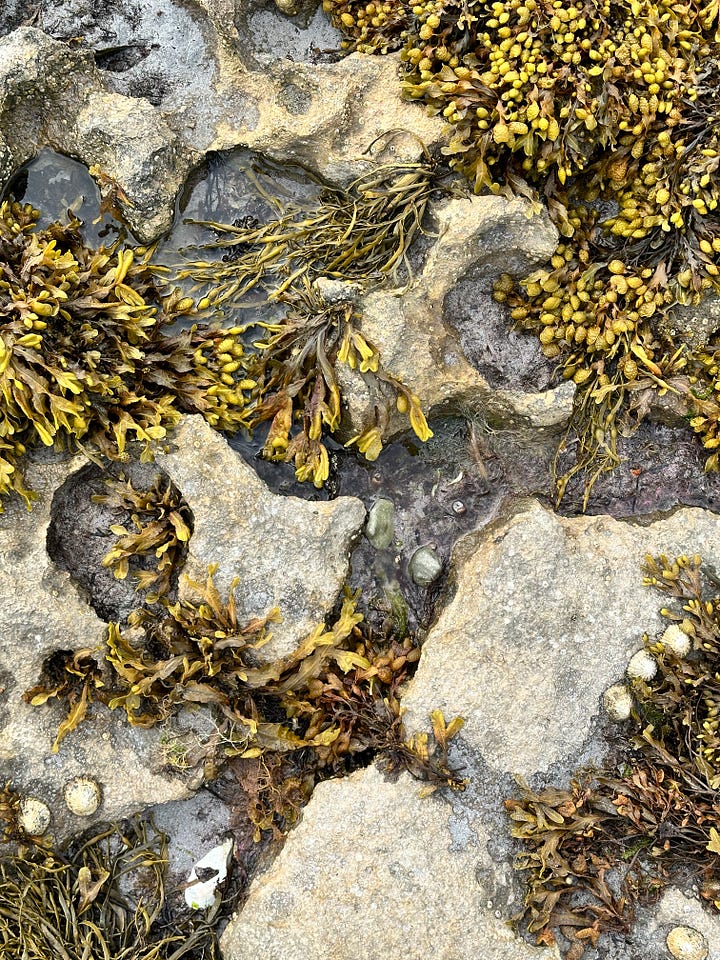
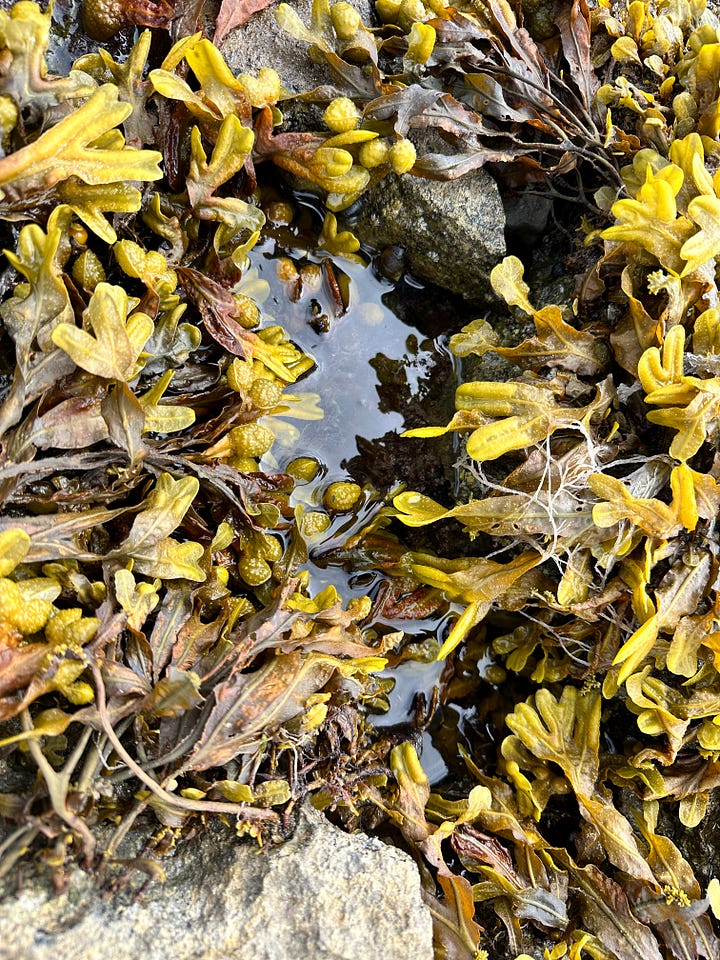
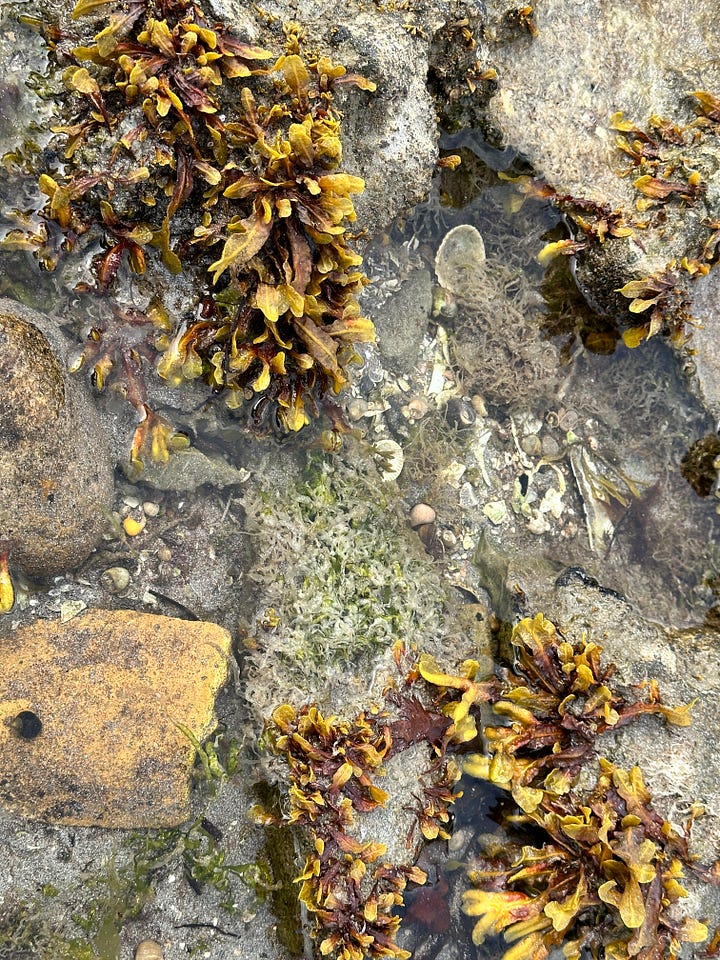
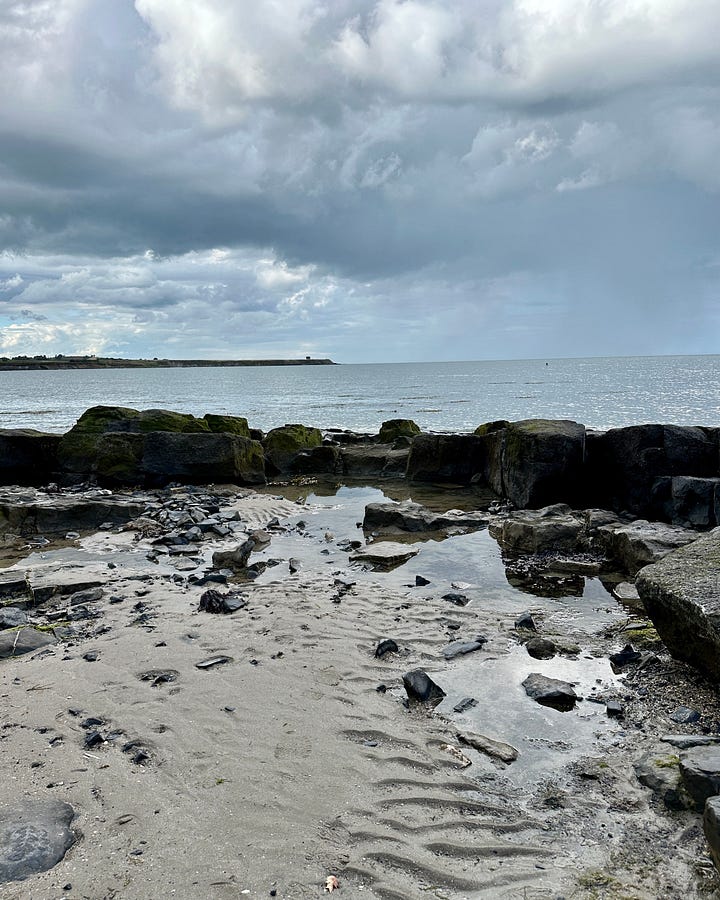
Tide pool art journaling
I’ve been trying to capture some of the intricacy of these coastal ecosystems, and within myself, in my sketchbook. Here are some suggestions to inspire your tide pool-themed art journaling - they can fit any seascape though, I think.
Rebecca Holden has a great post about this too:
Here are my ideas:
Watercolor sketches: Use quick watercolor washes to capture the colors and fluidity of tide pools. I wrote about this here:
Texture rubbings: Press your journal against interesting rock or shell textures and use a crayon or pencil to create rubbings. (I did this with a tree in my auntie Sheila’s garden)
Collage elements: Incorporate pressed seaweed into your journal pages (I wish I’d done this)
Color palettes: Document the various color schemes you observe in different tide pools.
Pattern studies: Unfocus your eyes & let your pencil map out recurring patterns found in shells, rocks, or water ripples on the page.
Written observations: Include short notes about what you see, smell, hear, and feel.
Before and after sketches: Draw the same tide pool area at high and low tide to show the dramatic changes both in the landscape and in yourself
Poetry or haiku: Intersperse your visual art with short poems inspired by your tide pool observations.
Recap: what you can expect here? A weekly-ish email featuring: 🐝 narrative non-fiction about/from beekeeping 🐝reflections on art witchcraft 🐝wildlife gardening and how to find yourself. Learn more and compare the different tiers.
Thanks for reading
I always love to hear from you in a comment, with a ❤️, or even a restack to Substack Notes. 🐝

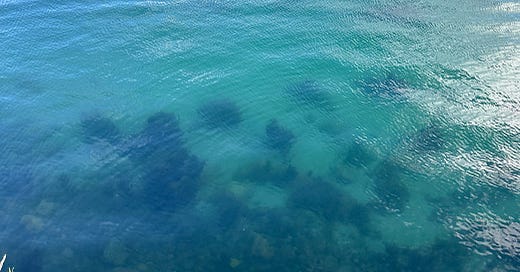


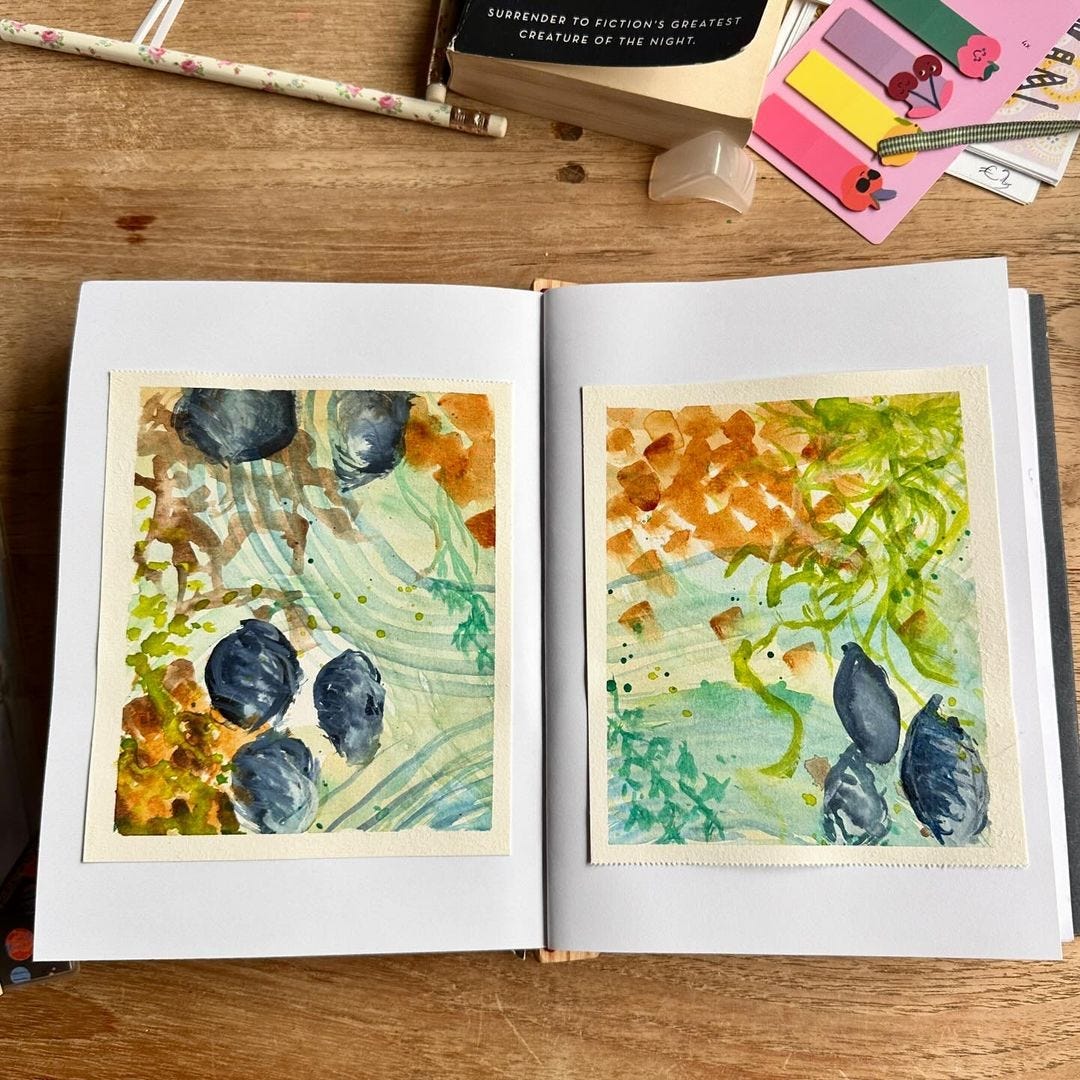
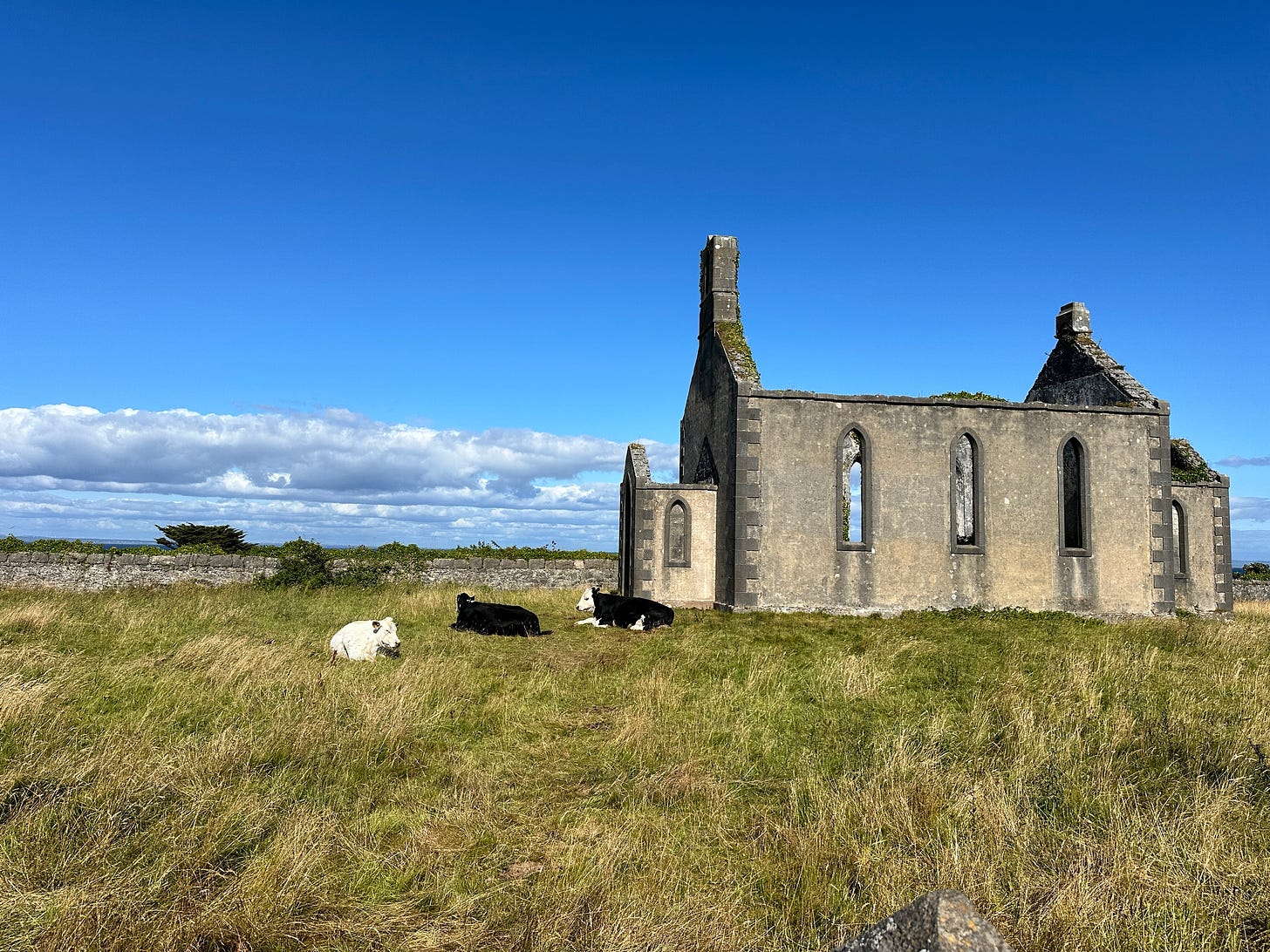

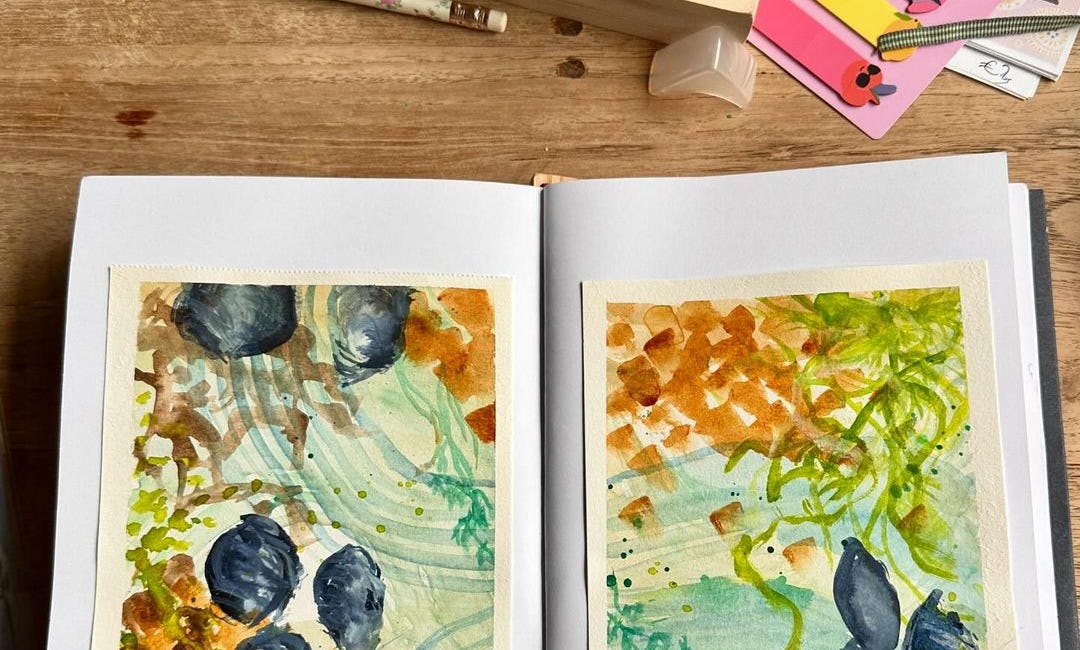
Beautiful. Now I'm hankering for a trip to the west.